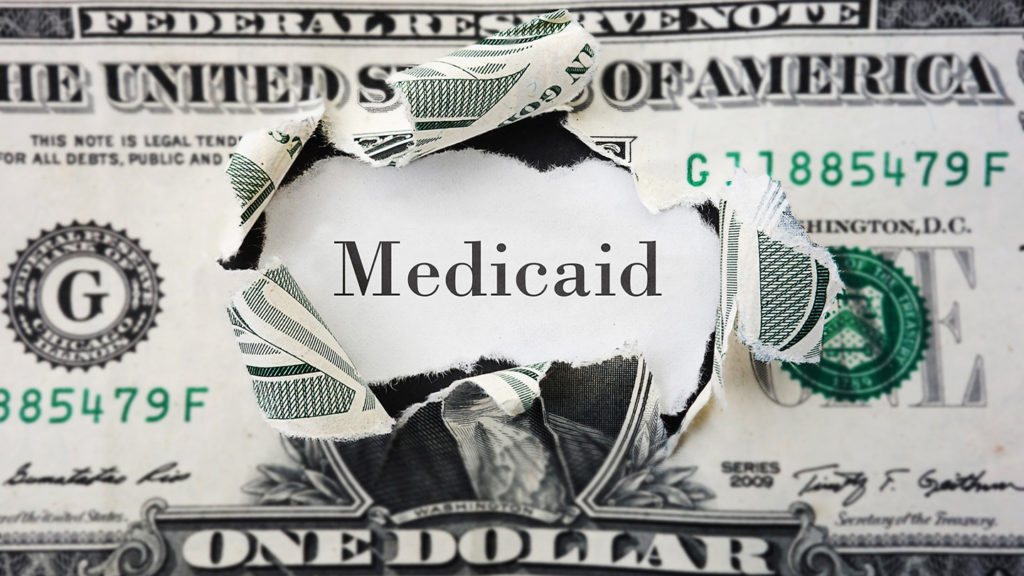
Uniformity by state of home- and community-based services eligibility, spending and benefits does not exist, but states continue to view HCBS as a way to provide an alternative to institutional long-term care, according to two recent analyses.
Combined federal and state spending on Medicaid HCBS totaled $116 billion in fiscal year 2020, according to the Kaiser Family Foundation. Two KFF analyses provide context about the scope and costs of HCBS services.
One analysis looking at people served and spending on HCBS during the pandemic found that most enrollees receive services as optional coverage choices made by state Medicaid programs. Those programs usually are in the form of waivers or optional state plan benefits, which means lack of HCBS uniformity across states.
Nationally, there was modest spending growth and changes in the number of people receiving HCBS from FY 2019 to FY 2020. States that experienced changes attributed them to the COVID-19 pandemic and resulting public health emergency, along with an aging population. Both of these factors, according to the KFF study authors, are expected to continue to influence Medicaid HCBS.
Congress provided states with temporary enhanced federal funds for Medicaid HCBS through the American Rescue Plan Act, passed in March 2021. ARPA included $195.3 billion for state governments to use at their discretion. The dollars have maximum flexibility, with states encouraged to direct funding for COVID-19 mitigation efforts and to support industries hardest hit by the crisis.
KFF Medicaid long-term care expert MaryBeth Musumeci, one of the authors of the analyses, told McKnight’s Senior Living that the big outstanding question is what happens with the HCBS proposal in the Build Back Better Act.
The act was hailed by the aging services industry for its “historic investments” in HCBS, affordable housing and workforce development. The budget reconciliation package would provide $150 billion in new federal funds for Medicaid HCBS, including a permanent increase in federal matching funds. But its future remains uncertain in the Senate.
“The really significant thing about that proposal is that it’s an enhanced federal match without an expiration date,” Musumeci said, adding that states knew ARPA funds would expire, making them less likely to commit to longer term initiatives, such as serving more people off of waiting lists or expanding services.
An enhanced federal match without an expiration date, she said, could advance structural changes to enhance HCBS access and eligibility, and expand the provider infrastructure.
State HCBS policy
A second KFF analysis examined the landscape of state policy choices about Medicaid HCBS in FY 2020.
States have pursued expanding HCBS over the past decade — for instance, in homes and in assisted living communities — as an alternative to institutional long-term care. HCBS spending accounted for 59% of total Medicaid long-term services and supports spending in FY 2019.
Nationally, 3 million people receive HCBS through waivers, such as Section 1915(c) and other types that enable HCBS in assisted living in some states, but enrollment limits create waiting lists — more than 665,000 nationally are on HCBS waiver waiting lists, according to KFF. More than 2.5 million people receive HCBS as part of the state plan benefit package.
States also lack HCBS uniformity in the scope of services provided, as well as reimbursement rates for providers.
“With long-term care facility deaths from COVID-19 recently surpassing 200,000, there is increased focus among policymakers and the public on avoiding institutional placement and expanding access to HCBS,” the authors wrote. (A nursing home would be considered an institution, but an assisted living community would not.) “Yet substantial variation in HCBS eligibility and services among states continues, creating a patchwork where not everyone who needs services can access them.”
The authors said it will be important to understand how states use new federal funds to expand HCBS eligibility and services, how those funds may affect state and provider capacity to deliver services, and to what extent they could bolster the direct care workforce.
“States are starting in different places in terms of the breadth of their existing HCBS programs,” the authors wrote. “However, BBBA also could incentivize states to move toward some national uniformity.”




